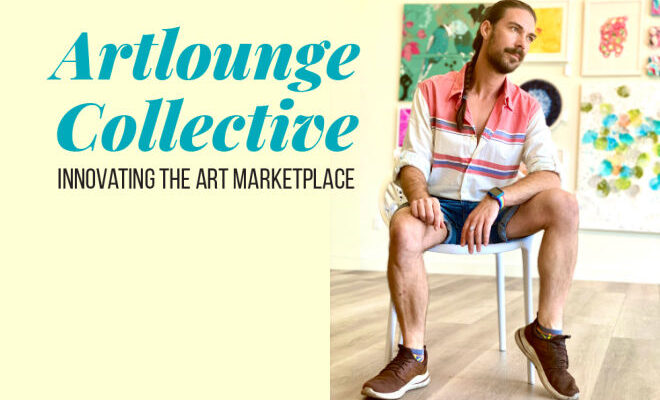 PHOTO COURTESY OF ARTLOUNGE COLLECTIVE
PHOTO COURTESY OF ARTLOUNGE COLLECTIVEA New Business Order
Artlounge Collective: Innovating the Art Marketplace
Artlounge Collective: Innovating the Art Marketplace
By KJ Ward
According to artbusiness.com, gallery representation gives artists greater credibility and access to an established clientele – two factors that should, in theory, increase sales for artists. The hallowed halls of art galleries, however, have a reputation for a level of exclusivity that rivals any Ivy League university or country club. In fact, according to visual artist K. Ryan Henisey, an artist’s odds of being shown in a gallery or museum are less than a basketball player’s odds of playing in the NBA.
As an award-winning watercolor painter and mixed-media collage artist, Henisey knows all too well the challenges of gate-keeping upheld by traditional galleries. And, even for the few who gain access to collectors via gallery representation, the price that the art goes for, on average, is often far lower than what the artist hoped for. “The ability of artists to just have access is extremely limited, and then, on top of that, the return on investment for artists is incredibly low,” Henisey told me.
Jobs in marketing and retail granted Henisey access to real consumer data that confirmed empirically what he had observed anecdotally regarding how only the tiniest sliver of artists find success via galleries. “There is a huge untapped potential in just the artist market itself – literally millions of people whose art isn’t doing anything but sitting in their closets or in the garage,” says Henisey. “There’s a hole in the economy in terms of people purchasing original – as opposed to mass-produced – artwork.”
“When you look at the material costs that we put into our work, there is a giant gap between what the artist and art world expectations were from the economy and what consumer habits actually are,” Henisey explained. “This realization drove me down a path of really in-depth research that changed not only my personal views on art, but also the way that I look at the traditional gallery model concept.”
So, what do you do when your research reveals a median sale point of original art in the US of $875? If you’re Mr. Henisey, you build a business around educating artists about the economics of their art – giving them a platform that includes the tools to help bring their work successfully to market and creating spaces that are accessible to those who love original art, don’t have $10,000 to shell out, but want more for their homes than mass-produced $75 prints from big box stores.
In founding Artlounge Collective – whose gallery store opened in Los Angeles in May 2022 – Henisey has moved away from so-called pay-to-play models and even away from typical cooperative or artist association models. “Rather than renting wall space,” Henisey says, “what my artists are doing is they’re paying for a suite of services that includes, at different levels, how much inventory we’ll take on, a full marketing package for the entire year, and then, at appropriate levels, guarantees of display.”
Henisey adds that – contrary to many traditional gallery models – Artlounge Collective curates all of the art, selecting which pieces from which artists become part of the various collections. And then the artists get the benefit of his years in the field – including time running an artist cooperative – not the least of which is real-world coaching on the importance of pricing in finding success in sales. Working backwards from that same median price point of $875, Henisey is able to have practical conversations with the artists he represents about how much money to spend on materials, how much time to spend creating, and what to price the final artwork at.
The real-world lessons don’t stop there. For many mid-career commercial artists, another bitter pill is seeing past what Henisey describes as the “mythology” of the art economy. The ideas that every back story is important to every collector, that the time an artist puts into the work is a consideration for the buyer, and that creating art that is important to the artist is inherently important to the consumer are – according to Henisey – ideas not rooted in commercial reality. “The rare American artists breaks the mold,” he reminds his artists.
Being a part of the Artlounge Collective is, however, much more than a series of tough lessons for artists. The evidence-based reality-checking also means that talented artists who work through a smart business lens are finding commercial success in ways that used to seem elusive. In just the few short months that Eugene Huffman has been with Artlounge Collective, the queer-identifying, HIV-positive abstract artist (and full-time paralegal) has seen nearly half a dozen sales – a pace that stands in stark contrast to the 1-2 pieces per exhibition per year he was selling before coming to ALC.
“Right when I joined ALC it kick-started my base,” Huffman told me in an interview. “As one of his exhibition artists, I always have pieces up.” After exclaiming, “I’m represented by a gallery now!” in what he confessed was an in-the-moment realization, Huffman attributed his commercial success, in part, to the research at the heart of Artlounge’s model.
“Ryan has done the market research. He and I figure out pricing together, but he already has an understanding of what sells and for how much,” Huffman said. “I trust him implicitly.”
Huffman also gives credit to the reach of Artlounge Collective. “Ryan thinks beyond the traditional gallery space. ALC exhibitions in hotels and the gallery of a [marijuana] dispensary bring our art to different clientele in different markets.”
Huffman also described a time when a coach he had hired advised him to strike “HIV-positive” from his bio and another time when the producers of one of his exhibitions actually “left out” this important part of his identity from its marketing materials. “Ryan is gay and an outspoken proponent of our community and all that we bring to our work,” he said. Artlounge Collective’s model of artist representation is clearly data-informed, but an appreciation of the fullness of its artists doesn’t seem to take a backseat. In fact, coupled with a creative strategy that brings artists’ work to a wider market, it just may be a business asset.

KJ Ward is a freedom fighter with a love of language and an appreciation of the power of the written word. Earlier in his career he worked as a case manager for the State of Hawaii Department of Human Services and as the director of Boston GLASS, a supportive services and advocacy program for LGBTQ youth. KJ also worked for several years as a communications specialist for McKinsey & Company in Germany.
Today, KJ partners with a small group of clients in service of their communications strategy and organizational development needs. He is a proud and active member of both the board of directors of Gender Spectrum and the California Coalition for Women Prisoners, and from time to time he publishes his own writing. KJ is also a registered yoga teacher, committed to bringing this practice of individual and community liberation to those whose access to it has been limited.
KJ earned a bachelor’s degree from Dartmouth College and a master’s degree in developmental psychology from Harvard University.
Business Equality Pride (BEQPride) is the first publication from the BEQ family of national print and digital magazines exclusively addressing the needs of LGBTQ small-to-medium sized businesses, entrepreneurs and professionals.






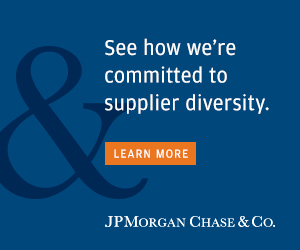

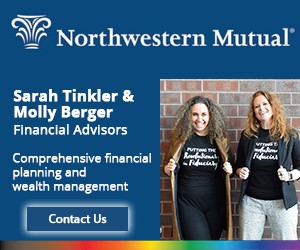
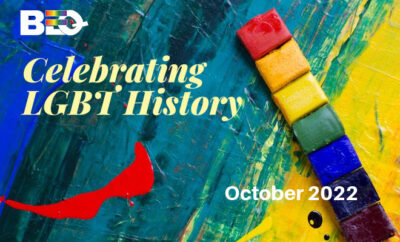
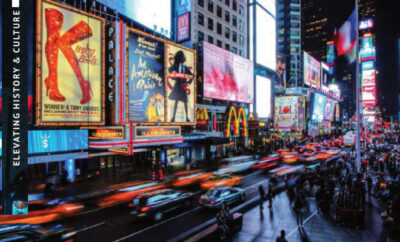






0 comments